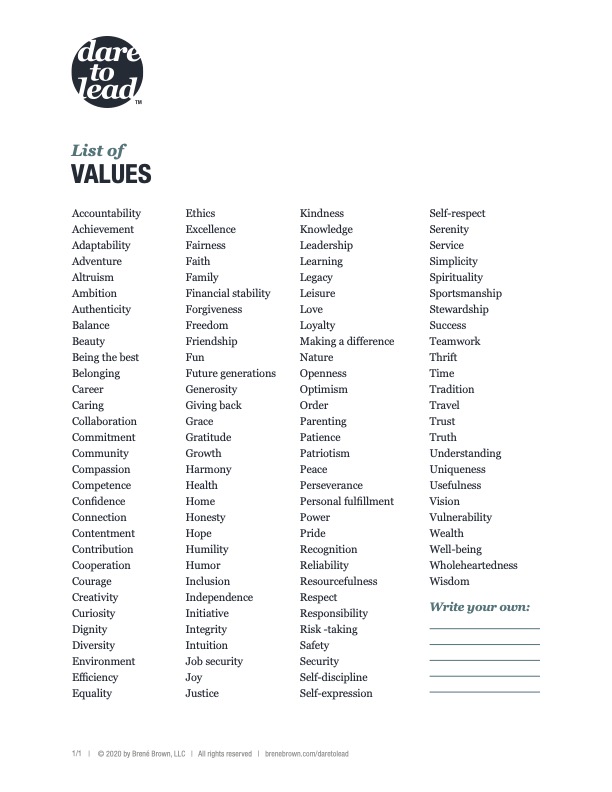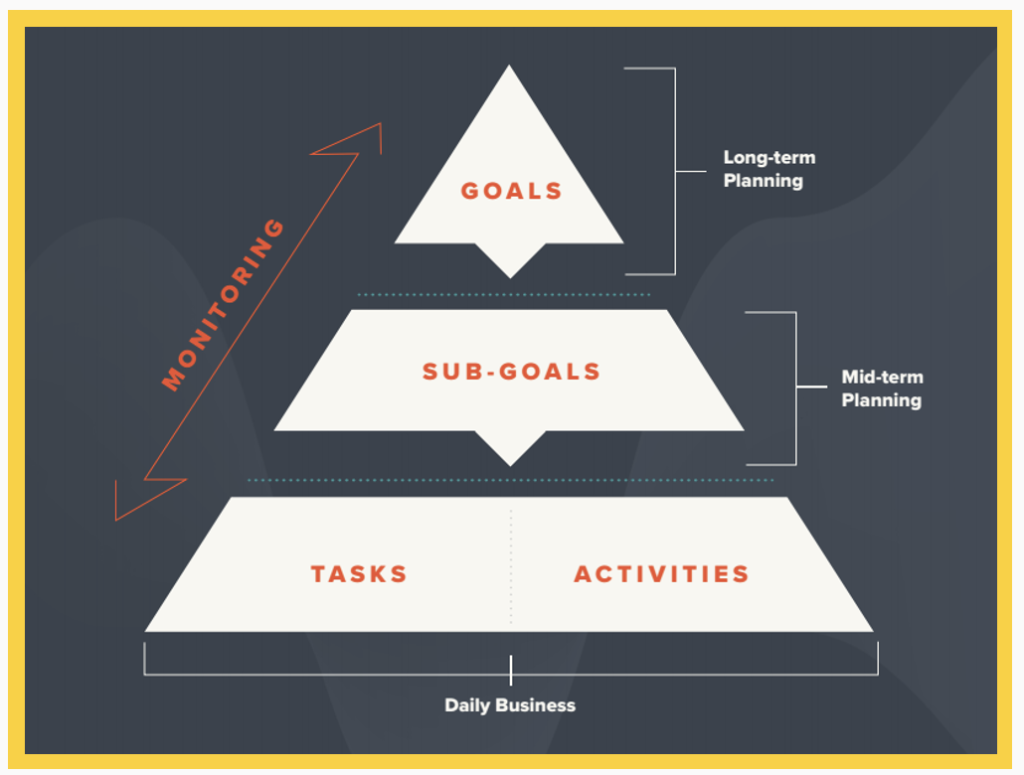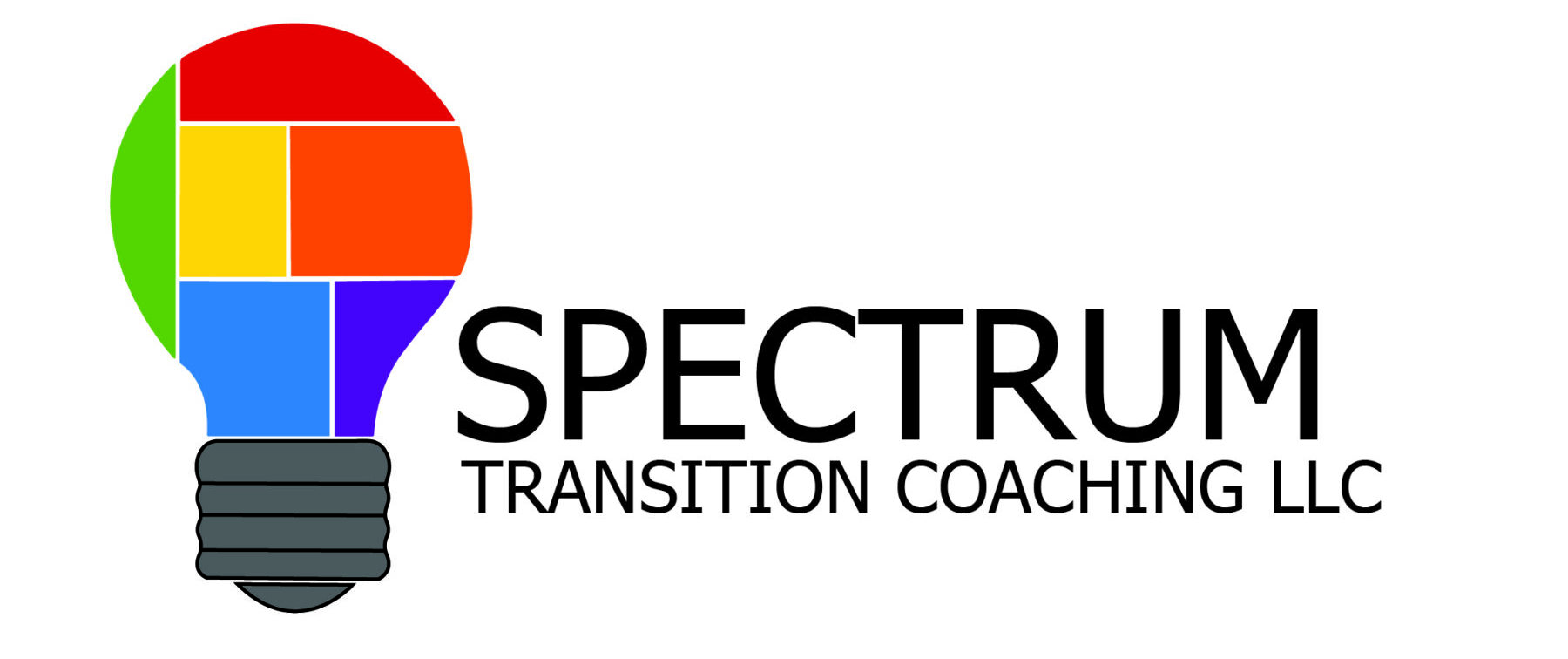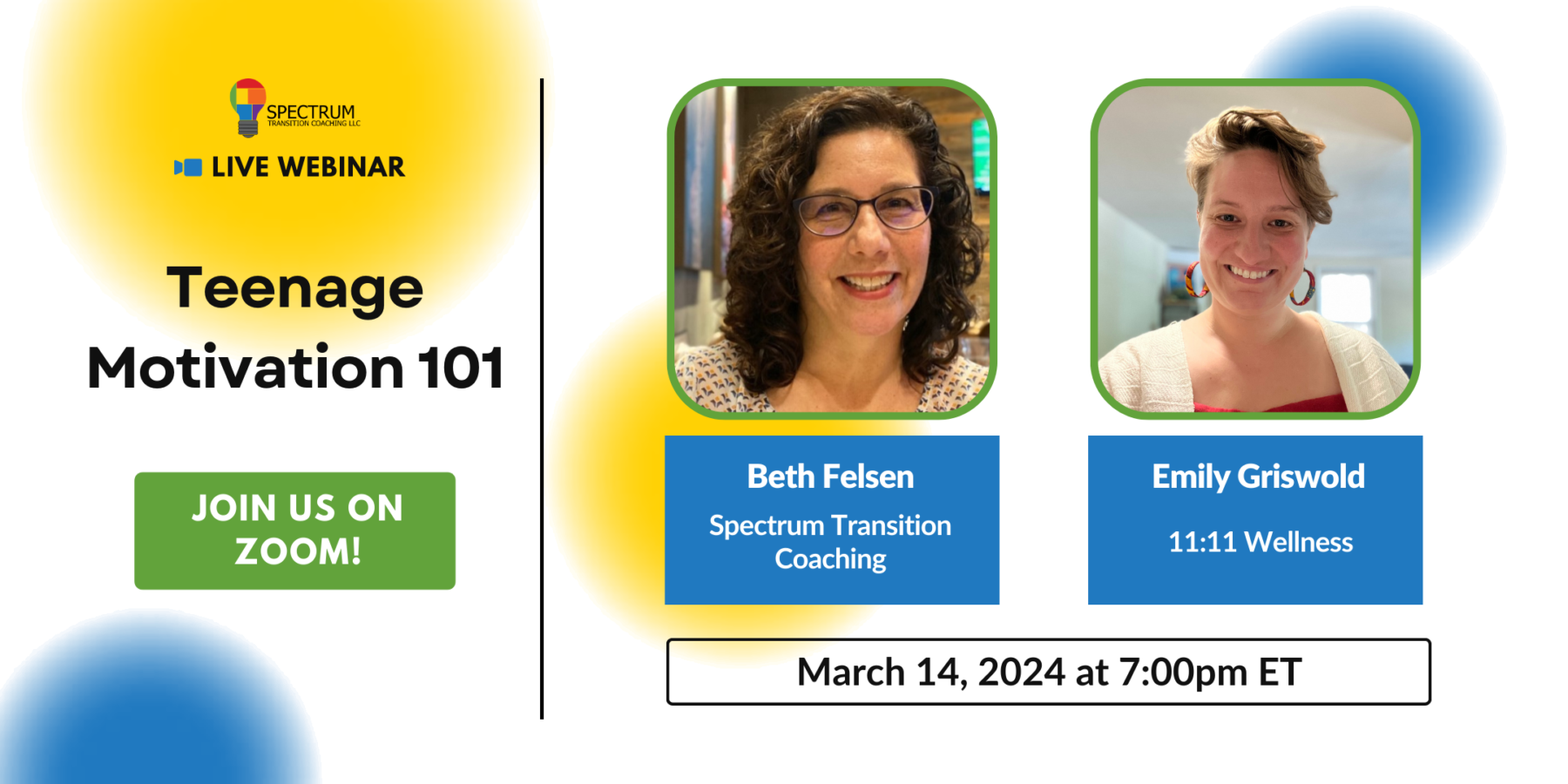We’ve all read the headlines:
“A Foolproof System to Reach Your Goals This Week”
“3 Simple Tools to Make Your Goals a Reality”
“Accomplish Your Goals in the New Year with This Technique”
These headlines promise magical tools and quick results. I wish I could tell you that I’ve found THE technique that works for everyone to reach their goals. The reality is that this goal-setting is a process and requires a thoughtful and individualized approach. There is no ‘easy’ button, but today I’m sharing some of my favorite terms and exercises that help my autistic clients make meaningful progress towards their goals.
Key Definitions about Goal Setting
Before we dive into the details, let’s define key terms that can help you and your autistic student converse about their goals.
Abstract Goals (or High Level Goal):
“A high-level goal is an embodiment of your values and priorities, your vision for the future, your idea of success. It is the achievement you seek, and putting that down in words is what will guide you to real success.” – Mukund Krishna (read his full LinkedIn article here).
Abstract goals may be:
“I want to feel more connected and give back to my community.”
“I want to have a stronger relationship with my child rather than feeling so stressed all the time.”
“I want to change careers to do something I enjoy.”
SMART Goals:
SMART goals bring more clarity to an abstract goal. SMART stands for specific, measurable, achievable, realistic, and time-bound.
Specific: Write a detailed description of the goal.
Measurable: Exactly how will I measure progress toward my goal?
Attainable: Given current circumstances, does the goal make sense?
Realistic: Is the goal relevant to my life purpose? Is it realistic given my circumstances?
Timely: When, exactly, will I begin working on this goal and when will I reach my goal?
SMART goals may be:
“I will attend events hosted by 2 local non-profits by the end of the month and send 2 follow up emails to people I meet there.”
“I will plan 1 evening a week to just enjoy the company of my child with something they enjoy like their favorite meal or video game.”
“I will set up 2 informational interviews outside my industry by Friday.”
Values: Your most important priorities as an individual. They also serve as a filter for decision making. Choices that align with your personal values are likely wise decisions while decisions that conflict with your most important values may not be a good fit. Review this list of values from Brene Brown’s Dare to Lead program to select the 3-5 values that are most important to you.

Vision: What you want to accomplish with your life, professionally and personally. It can be helpful to use futuristic thinking to think about what you want to be remembered for or what your legacy may be long after you are gone.
Tasks: The day-to-day activities of life that help you accomplish your vision. This includes significant events (job interviews, college decisions, friend selection) as well as mundane activities (running errands, making phone calls, completing assignments).
Goal Setting Exercise for Autistic Young Adults

Graphic Credit: Irene Mmassey on Medium
Let’s put these terms into action!
Research shows that writing something down helps our brains to fully comprehend it so grab a piece of paper and a pen for the next few minutes. Draw a triangle and split it into 3 rows like the image above. For our purposes, the top triangle of the pyramid (‘Goals’) represents abstract goals while the bottom level of the pyramid (‘Tasks’ and ‘Activities’) represents SMART goals.
Start at the top of the pyramid. Think big picture and don’t worry about obstacles at this point. Consider:
- What is your abstract goal for this season of your life?
- How do you see yourself as your most happy, fulfilled and peaceful?
- Imagine your life in 2, 5 or 10 years. What does that include?
Next, fill out the middle layer as you think about what smaller goals help you fulfill this vision. Think about the different areas of your life – personal, professional, physical, mental, spiritual and more. Consider:
- What are the components of the life you envision?
- What are the “ingredients” to create the life you want? Missing components and ingredients can become your sub goals, all needed to achieve your abstract goal.
Finally, fill out the bottom layer with SMART goals. Consider:
- What are the specific and realistic activities that move you closer to your vision?
- How can you attach specific activities to each goal to make it manageable?
- What timeline is realistic given your current work/school load?
What’s Next?
How do make this exercise mean something? How do you use abstract and SMART goals to help your autistic student build a fulfilling and balanced life?
It takes many small steps to create something wonderful. Here’s a few ideas to get started:
- Think about the people you admire. Why do you admire them? Thinking about people you personally know who have built a life that you admire is a great way to craft your abstract goals too.
- Talk to others or journal about your goals. This can help bring them into focus and may help build sub goals and SMART goals.
- Work on only a few SMART goals at a time. This way you can focus clearly on achieving them. When you reach the end of the time period in your goal, evaluate your progress. If you haven’t achieved your goal, re-write it based on your experience and try again!
Teen Motivation 101 – Coming soon!
This session will feature a conversation between Beth Felsen and Emily Griswold from Left of Center, a coaching practice dedicated to helping neurodivergent teens find success and confidence in school and life. This signature offering helps parents and caregivers of teens understand how to set goals that actually stick. Using the science behind abstract goal setting, participants will get a chance to experiment with setting a goal that plans for the inevitable roadblocks that life throws our way.
A recording will be sent to all who register. Reserve your spot here!


